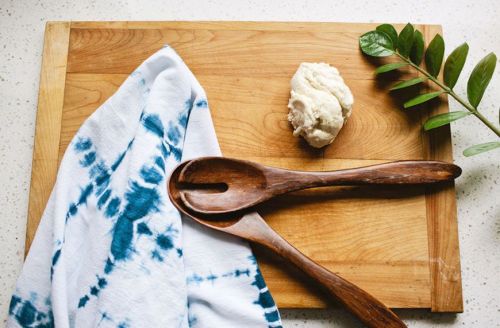Our editors independently select these products. Making a purchase through our links may earn Well+Good a commission
How to revive food-stained wooden spoons—and when to let them die
Is your collection of kitchen utensils in need of a little TLC? Here's how to clean wooden spoons—and when to let them go.

There’s no prettier collection of utensils than a bouquet of wooden spoons displayed proudly on the kitchen countertop. Well, that is until they become so stained and rough to the touch that they totally ruin the vibe of the space. But must you let them go when they’re no longer pristine? Or can you salvage them with a little TLC?
Long-lasting, yes, but wooden utensils are not immortal. Even if you care for them properly—which, FYI, means always hand-washing (sorry, dishwasher fans) and drying thoroughly with a towel—they’ll need to be replaced eventually. A little wear and tear or discoloration doesn’t necessarily mean it’s time to buy replacements. However, according to The Spruce, if your spoon develops any cracks (caused by naturally drying out, exposure to extreme temperatures, or excess moisture after washing, etc.), you’ve gotta ditch it. Dried food particles and bacteria love to live in the cracks of a wooden spoon. Gross.
If your wooden spoon gets worn down, rough, and fuzzy, or has some food-related stains, there’s a quick fix. You can renew wooden utensils with sandpaper or steel wool. Once smooth again, finish the job by using a soft cloth to rub in a generous amount of food-grade mineral oil. To prevent cracks from occurring, apply subsequent coats of mineral oil monthly. If you thought those turmeric, paprika, or tomato stains would never come out, rest assured that with just a little love, your collection of wooden utensils will be restored to its former beauty.
Discover five baking soda cleaning hacks you didn’t know. And learn how to clean up a messy kitchen in record time.
Sign Up for Our Daily Newsletter
Get all the latest in wellness, trends, food, fitness, beauty, and more delivered right to your inbox.
Got it, you've been added to our email list.










